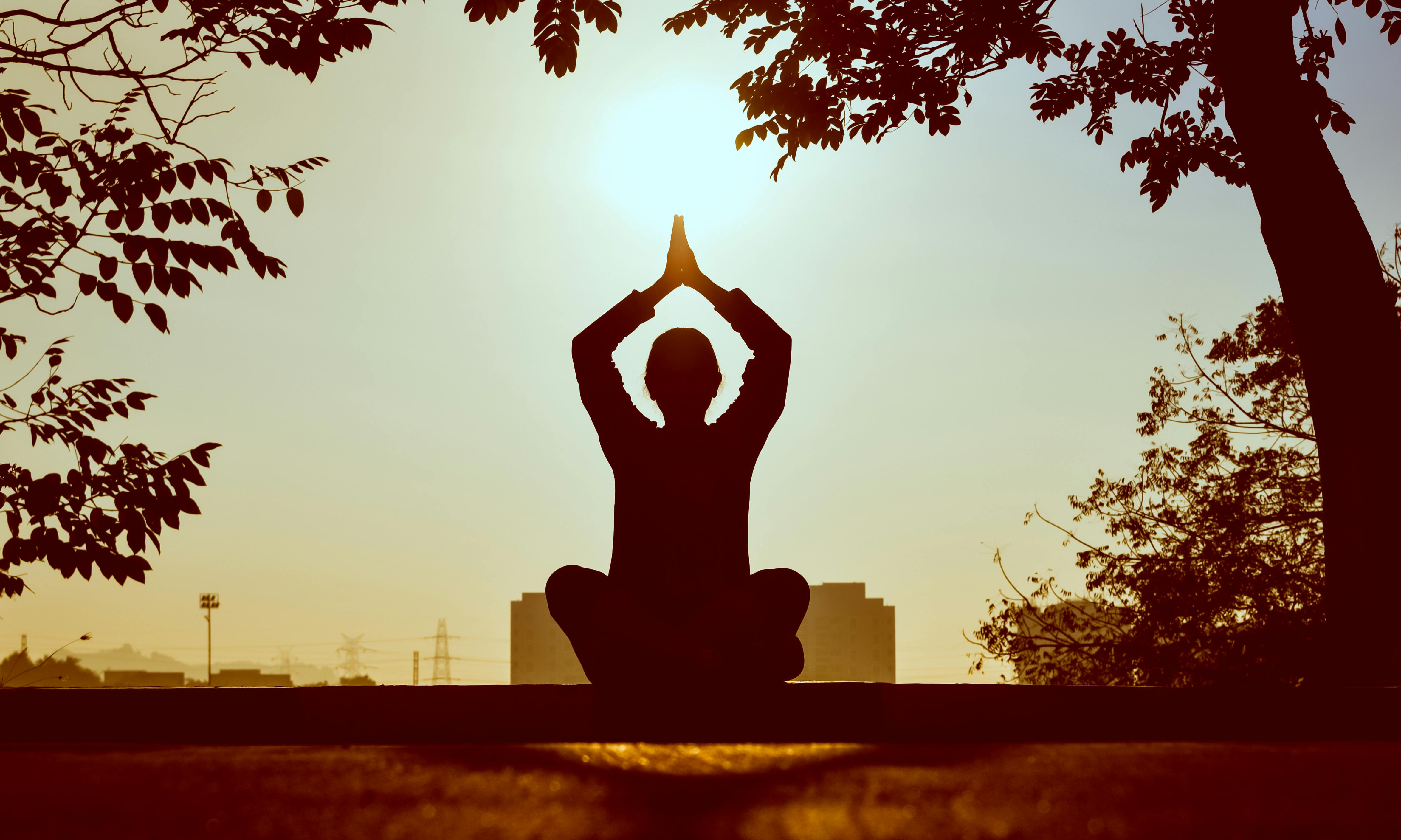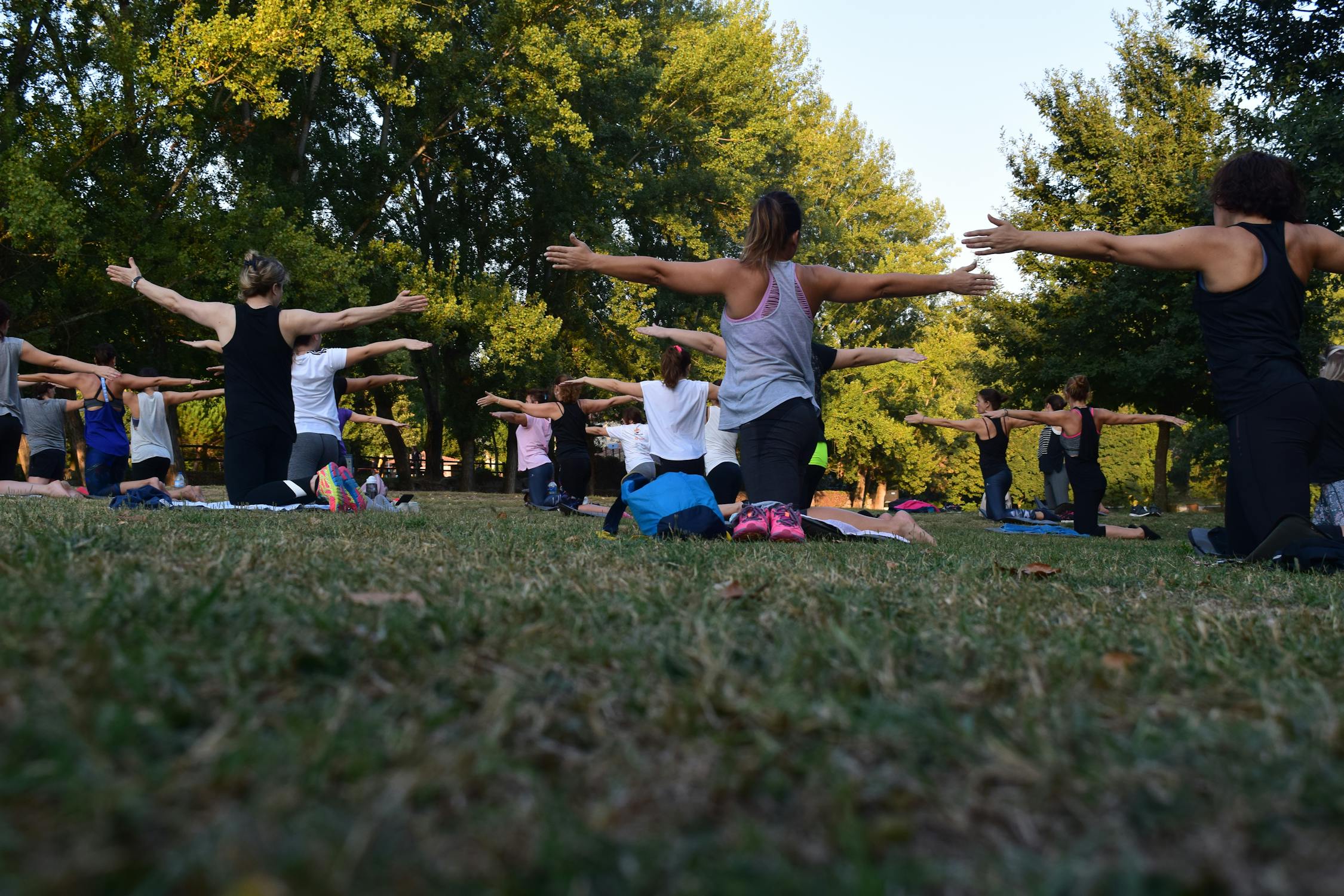Incorporating Yoga into Your Fitness Routine
INTRODUCTION
Are you looking to mix up your fitness routine and try something new? Have you heard about the numerous benefits of incorporating yoga into your workouts but aren't sure where to start? Look no further! In this article, we'll delve into the world of yoga and explore how it can enhance your overall fitness and well-being. From increased flexibility and muscle tone to stress reduction and cardiovascular health, the benefits of incorporating yoga into your routine are endless. So why not give it a try and see the positive effects firsthand?
What is Yoga?
Before we dive into the many benefits of yoga for fitness, it's important to understand exactly what yoga is and where it comes from. Yoga is a physical, mental, and spiritual practice that originated in ancient India over 5,000 years ago. It involves a series of postures, known as asanas, and controlled breathing techniques, known as pranayama. But yoga is so much more than just a workout - it is a holistic approach to health and well-being that seeks to unite the mind, body, and spirit. So whether you're looking to increase your flexibility, build strength, or simply find a sense of calm and clarity, yoga has something to offer for everyone.
When it comes to yoga, there's no one-size-fits-all approach. Different types of yoga cater to different needs and preferences, so it's important to explore and find the right fit for you. Here's a brief overview of some popular styles of yoga:
Hatha Yoga: Hatha is a general term that refers to the physical practice of yoga, involving postures and breathing techniques. Hatha classes are typically slower-paced and beginner-friendly, making them a great starting point for those new to yoga.
Vinyasa Yoga: Vinyasa, also known as flow yoga, is a more dynamic and fluid style that links movement with breath. Classes often involve a series of sun salutations and a sequence of poses that flow together.
Yin Yoga: Yin yoga is a slow-paced style that involves holding seated or supine poses for several minutes at a time. It is focused on stretching the connective tissues and promoting relaxation.
Bikram Yoga: Bikram yoga, also known as "hot yoga," is a series of 26 postures and two breathing exercises performed in a heated room. The heat is thought to help relax muscles and allow for a deeper stretch.
These are just a few examples of the many different types of yoga out there. So whether you're looking for a more vigorous and dynamic practice or a slower, more contemplative approach, there's a style of yoga for you.
Benefits of Yoga for Fitness
1 -Increases flexibility and range of motion
One of the most well-known benefits of yoga is its ability to increase flexibility and range of motion. As we go about our daily lives, it's easy for our muscles to become tight and inflexible, especially if we spend a lot of time sitting or engaging in activities that involve repetitive movements. This can lead to a decrease in mobility and an increased risk of injury.
By regularly practicing yoga, you can gradually increase your flexibility and range of motion, allowing you to move more freely and comfortably in your daily life. This is especially important as we age, as our muscles naturally become less flexible over time. Incorporating yoga into your fitness routine can help to combat this natural decline and keep your body feeling youthful and agile.
But increased flexibility isn't just about being able to touch your toes or do a split - it also has practical benefits, such as improved posture and reduced back pain. So if you're looking to boost your flexibility and range of motion, consider adding some yoga to your fitness routine. You'll be amazed at the difference it can make.
2-Builds strength and muscle tone
When it comes to building strength and muscle tone, you might not immediately think of yoga as an effective workout. However, don't be fooled - while yoga may not involve heavy weights or intense cardio, it can still be a powerful tool for building strength and toning your muscles.
Think about it - in a typical yoga class, you are using your own body weight to support and challenge yourself in various poses. This can help to build strength in your core, arms, legs, and back, as well as increase muscle tone and definition. Plus, because yoga involves both concentric (shortening) and eccentric (lengthening) contractions, it can help to improve muscle balance and prevent imbalances that can lead to injury.
So don't underestimate the strength-building potential of yoga! Whether you're a seasoned athlete looking to add some variety to your workouts or a beginner looking to build a strong foundation, incorporating yoga into your routine can help you achieve your strength and toning goals.
3-Improves balance and coordination
Incorporating yoga into your fitness routine can do more than just increase your strength and flexibility - it can also improve your balance and coordination. This is especially important as we age, as our balance tends to decline over time.
Yoga involves a variety of balance poses, such as tree pose and warrior III, that require you to engage your core and stabilize your body while standing on one leg. These poses can help to improve your overall balance and coordination, as well as build strength in your ankles, legs, and core.
But the benefits of improved balance and coordination extend far beyond the yoga mat. By improving your balance and coordination, you can reduce your risk of falls and injuries, especially if you participate in activities that require a lot of balance, such as running or skiing. So if you're looking to improve your balance and coordination, consider adding some yoga to your fitness routine. Your body (and mind) will thank you!
3-Enhances cardiovascular health
While yoga is often thought of as a low-impact, calming practice, it can also be a powerful tool for enhancing cardiovascular health. Depending on the style and intensity of the class, yoga can provide a moderate to vigorous cardiovascular workout that can help to improve your heart health.
Some styles of yoga, such as vinyasa and power yoga, involve a series of flowing movements that can elevate your heart rate and provide a cardiovascular challenge. Even slower-paced styles, such as hatha and yin, can still provide cardiovascular benefits through the use of longer holds and deeper stretches.
Incorporating yoga into your fitness routine can help to strengthen your heart, improve circulation, and lower blood pressure. It can also increase your endurance and stamina, allowing you to push yourself harder during other types of workouts. So if you're looking to boost your cardiovascular health, don't discount the power of yoga!
4-Reduces stress and promotes relaxation
In our fast-paced, constantly connected world, it's no surprise that many of us struggle with stress and anxiety on a daily basis. This is where yoga can be a powerful ally.
One of the primary benefits of yoga is its ability to reduce stress and promote relaxation. This is achieved through the combination of physical postures, controlled breathing techniques, and mindfulness practices that are integral to a yoga practice. By focusing on the present moment and letting go of distractions and worries, yoga can help to calm the mind and reduce stress and anxiety.
In addition to its stress-reducing effects, yoga can also promote relaxation by activating the parasympathetic nervous system, which is responsible for the "rest and digest" response. This can help to lower your heart rate, decrease blood pressure, and increase feelings of calm and relaxation.
So if you're feeling overwhelmed and stressed out, consider incorporating some yoga into your fitness routine. You may be surprised at the positive effects it can have on your mind and body.
How to Incorporate Yoga into Your Fitness Routine
Tips for beginners, including finding a class or instructor, and starting with basic poses
If you're new to yoga, it can be intimidating to know where to start. But don't worry - with a little guidance and patience, you'll be well on your way to reaping the numerous benefits of this ancient practice.
One of the best ways for beginners to get started with yoga is to take a class with an experienced instructor. This can help to ensure that you are practicing the poses safely and correctly, and can also provide a supportive and welcoming environment for you to learn and grow. Look for classes specifically labeled as "beginner" or "gentle" if you're feeling uncertain, or consider private lessons with an instructor to get personalized attention.
If you're unable to find a class in your area or prefer to practice at home, there are also many online resources available, including yoga videos and virtual classes. Just be sure to follow along with an experienced instructor to ensure proper form and alignment.
As you get started with yoga, it's important to focus on the basics and not get too caught up in trying to do more advanced poses. Start with simple, foundational poses, such as downward facing dog, mountain pose, and child's pose, and gradually build up from there. Remember, the beauty of yoga is in the journey, not the destination. Take it one pose at a time, and don't be afraid to ask for help if you need it. With time and practice, you'll be amazed at what your body is capable of!
Ideas for integrating yoga into your existing workout routine
If you're already in the habit of working out regularly, you may be wondering how you can incorporate yoga into your existing routine. The good news is that there are many ways to do so, depending on your goals and preferences.
One option is to simply add a dedicated yoga session to your weekly workout schedule. This could be a full-length class, or a shorter practice focused on specific areas, such as stretching or relaxation. By adding yoga to your routine, you can complement your other workouts and reap the numerous benefits of this practice.
Another way to integrate yoga into your workouts is to use it as a warm-up or cool-down. For example, you could start your workouts with some yoga-inspired stretches to loosen up your muscles and prepare your body for the activity ahead. Similarly, you could end your workouts with some restorative yoga poses to help your body recover and relax.
No matter how you choose to incorporate yoga into your existing routine, the key is to make it a consistent part of your routine. This can help you to see the greatest benefits and truly make it a sustainable part of your lifestyle. So why not give it a try and see how it fits into your existing workout routine? Your body (and mind) will thank you!
Modifications and variations for different fitness levels
One of the great things about yoga is that it is accessible to people of all fitness levels. No matter where you are on your fitness journey, there are modifications and variations that can help you to practice safely and effectively.
If you're new to yoga or have physical limitations, it's important to let your instructor know so that they can provide appropriate modifications. For example, if you have a wrist injury, you may need to avoid weight-bearing poses on your hands or use blocks or straps to modify the pose. If you have back pain, you may need to avoid certain twists or forward folds. Your instructor can help you to find variations that work for your body and help you to get the most out of your practice.
Even if you're an experienced athlete, it's important to remember that yoga is not about competition or achieving a certain level of "perfection" in a pose. It's about listening to your body and finding what works for you in the moment. If you're struggling with a pose or feeling tired, it's perfectly okay to take a break or try a modified version.
So whether you're a beginner or an advanced practitioner, remember that yoga is for everyone. Don't be afraid to ask for help or modify as needed, and you'll be well on your way to reaping the numerous benefits of this practice.
A few pieces of equipment that can be helpful for practicing yoga
Yoga mat: A yoga mat provides a non-slip surface for your practice, as well as a little extra cushioning for your joints. Look for a mat that is the right thickness for your needs and preferences.
Blocks: Yoga blocks are great for beginners or those with limited flexibility, as they can help to support the body in certain poses and provide a little extra lift. Blocks can also be helpful for more advanced practitioners as a way to add challenge to a pose.
Straps: Yoga straps can be used to help you reach your feet or hands in certain poses, or to provide support in seated forward folds. They can also be used to add resistance in standing poses.
Bolsters: Bolsters are long, firm pillows that can be used to support the body in restorative poses, such as savasana (corpse pose) or legs-up-the-wall pose. They can help to relax the muscles and promote relaxation.
Blankets: Blankets can be used as props to provide support or padding in certain poses, such as seated forward folds. They can also be used to keep warm during restorative poses or to cover up during relaxation at the end of class.
Remember, it's not necessary to have all of this equipment to practice yoga. A yoga mat is usually the most essential piece of equipment, and the rest can be added as needed or desired.
Conclusion
In conclusion, incorporating yoga into your fitness routine can bring numerous benefits to your physical and mental well-being. From increased flexibility and muscle tone to improved balance and coordination, and enhanced cardiovascular health to reduced stress and relaxation, the benefits of yoga are truly endless.
If you're new to yoga, don't be intimidated - there are resources available, such as beginner classes and online videos, to help you get started. And if you're already an experienced athlete, don't underestimate the power of yoga as a complement to your existing workouts. No matter your fitness level, there are modifications and variations available to make yoga accessible and enjoyable for everyone.
So why not give it a try and see the positive effects firsthand? Your body (and mind) will thank you. Namaste!


















